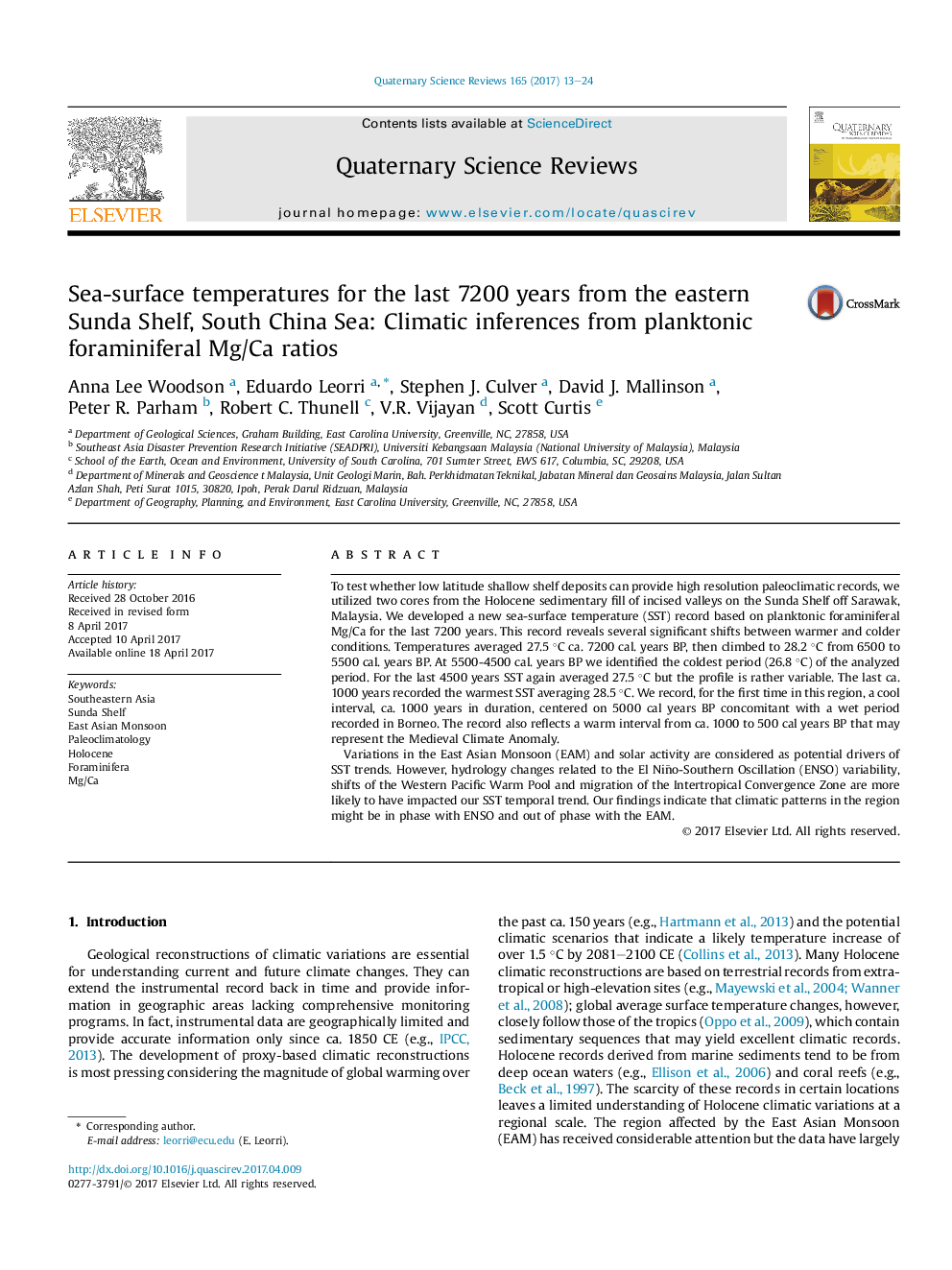| کد مقاله | کد نشریه | سال انتشار | مقاله انگلیسی | نسخه تمام متن |
|---|---|---|---|---|
| 5786734 | 1640770 | 2017 | 12 صفحه PDF | دانلود رایگان |

- Foraminiferal Mg/Ca data indicate SST on the Sunda Shelf for the past 7200 years.
- A 1000-year cool interval was identified, centered on 5000 cal years.
- The last ca. 1000 years were the warmest interval with SST averaging 28.5 ± 0.5 °C.
- Shallow shelf environments can produce high resolution paleoclimatic reconstructions.
To test whether low latitude shallow shelf deposits can provide high resolution paleoclimatic records, we utilized two cores from the Holocene sedimentary fill of incised valleys on the Sunda Shelf off Sarawak, Malaysia. We developed a new sea-surface temperature (SST) record based on planktonic foraminiferal Mg/Ca for the last 7200 years. This record reveals several significant shifts between warmer and colder conditions. Temperatures averaged 27.5 °C ca. 7200 cal. years BP, then climbed to 28.2 °C from 6500 to 5500 cal. years BP. At 5500-4500 cal. years BP we identified the coldest period (26.8 °C) of the analyzed period. For the last 4500 years SST again averaged 27.5 °C but the profile is rather variable. The last ca. 1000 years recorded the warmest SST averaging 28.5 °C. We record, for the first time in this region, a cool interval, ca. 1000 years in duration, centered on 5000 cal years BP concomitant with a wet period recorded in Borneo. The record also reflects a warm interval from ca. 1000 to 500 cal years BP that may represent the Medieval Climate Anomaly.Variations in the East Asian Monsoon (EAM) and solar activity are considered as potential drivers of SST trends. However, hydrology changes related to the El Niño-Southern Oscillation (ENSO) variability, shifts of the Western Pacific Warm Pool and migration of the Intertropical Convergence Zone are more likely to have impacted our SST temporal trend. Our findings indicate that climatic patterns in the region might be in phase with ENSO and out of phase with the EAM.
Journal: Quaternary Science Reviews - Volume 165, 1 June 2017, Pages 13-24